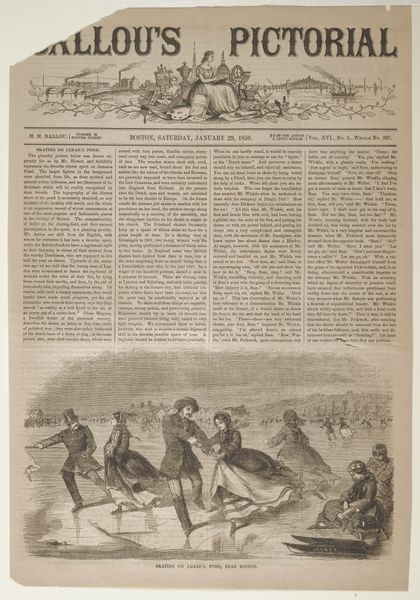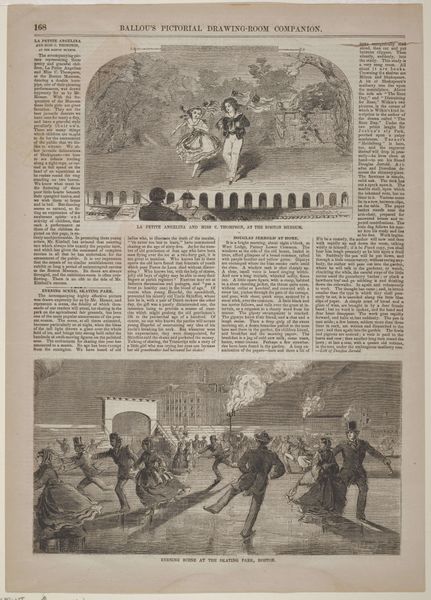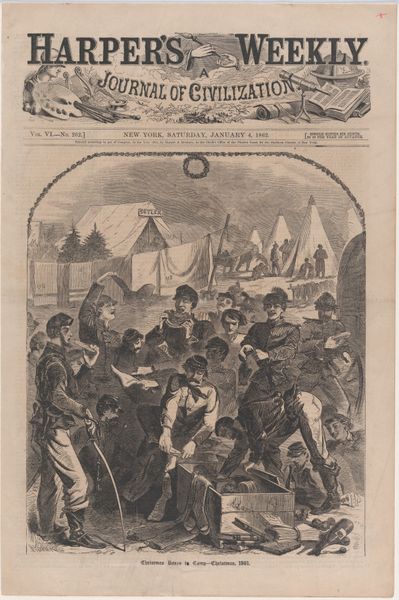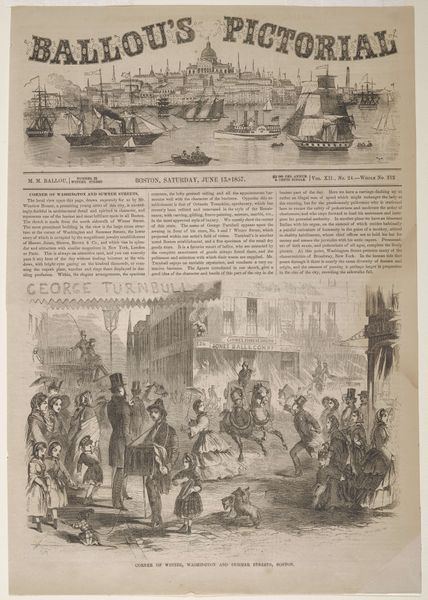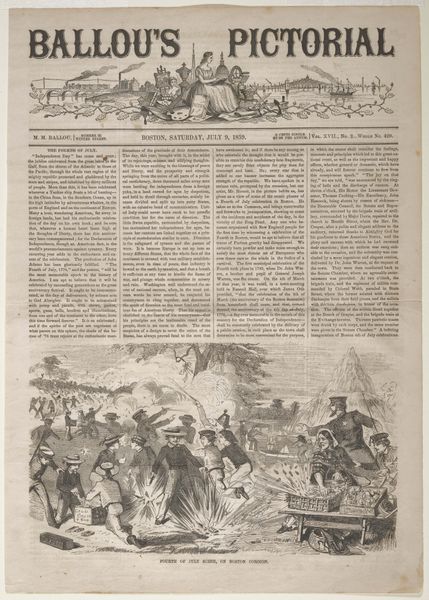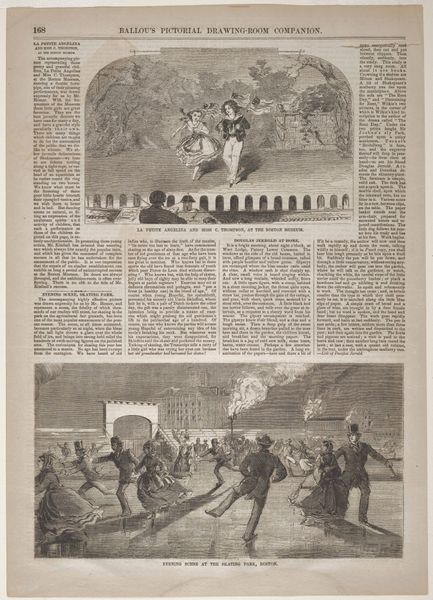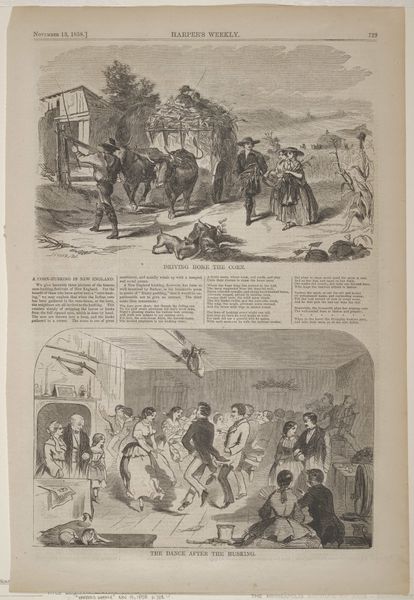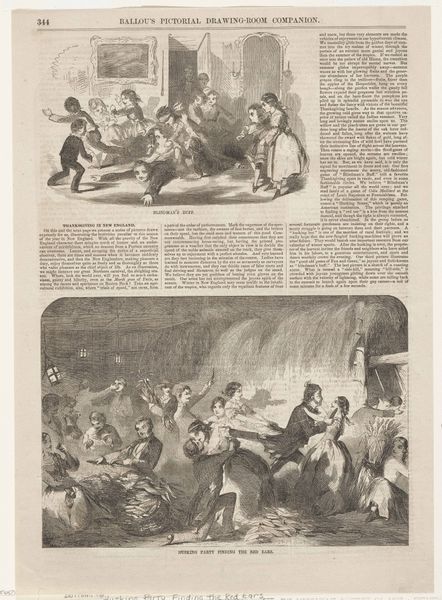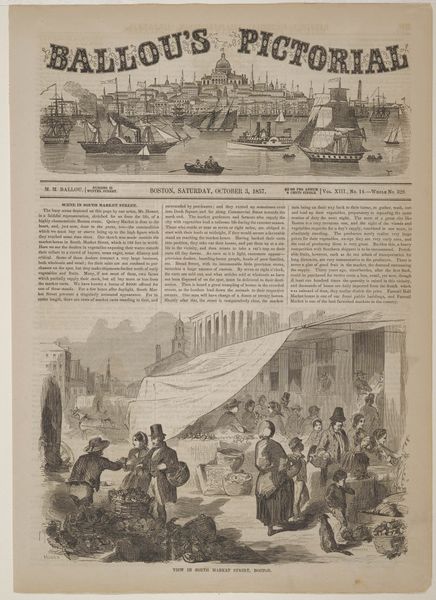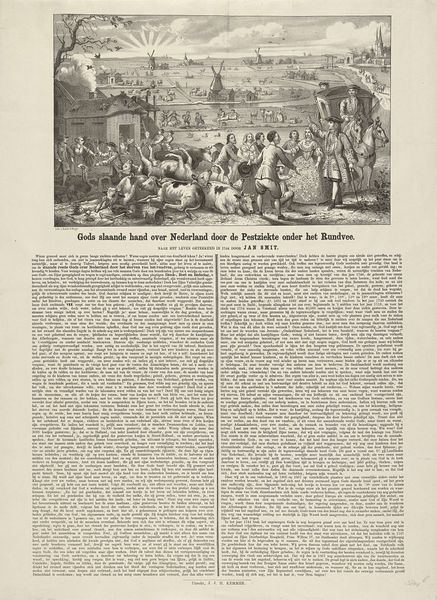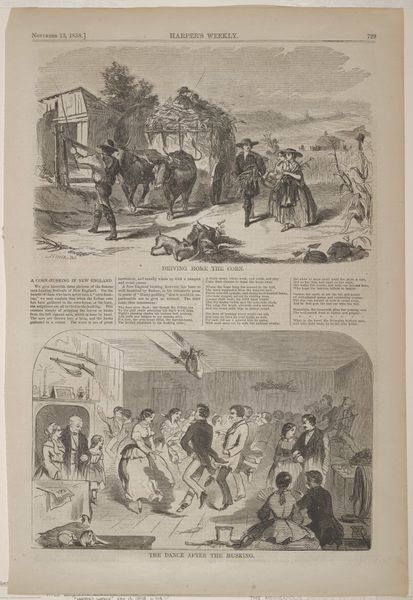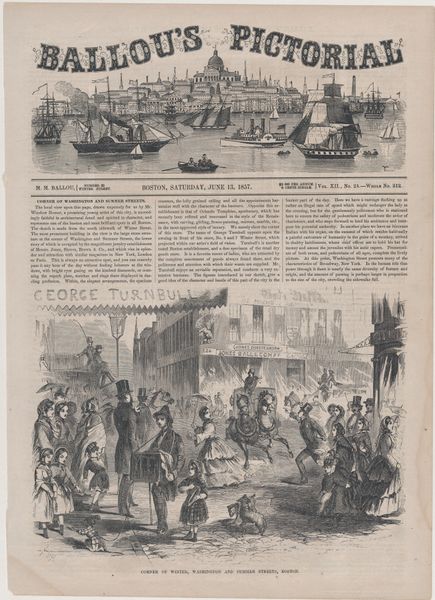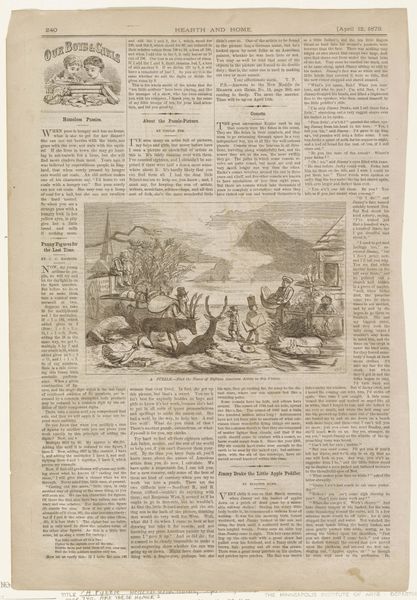
graphic-art, print, woodcut, wood-engraving, engraving
#
graphic-art
# print
#
old engraving style
#
landscape
#
woodcut
#
united-states
#
cityscape
#
genre-painting
#
history-painting
#
wood-engraving
#
engraving
#
columned text
Dimensions: 5 1/2 x 9 7/16 in. (13.97 x 23.97 cm) (image)15 1/8 x 11 1/8 in. (38.42 x 28.26 cm) (sheet)
Copyright: Public Domain
Editor: Winslow Homer's "Class Day at Harvard University" from 1858, rendered as a wood engraving, captures a bustling scene. There's so much movement, almost chaotic, but it seems contained within the rigid lines of the print. What do you see in this piece beyond the surface-level depiction of a celebratory day? Curator: What I find striking is the socio-political context embedded within this seemingly festive portrayal of academia. The visual emphasis on these elites freezes the narrative. Do you notice how this image both reinforces and idealizes the existing power structures, class divisions, and gender dynamics of 19th-century America? Who has access to education and whose stories remain untold? Editor: I see what you mean. It's easy to get caught up in the historical depiction of the event itself and forget to consider who is represented and who is missing. The students are the only figures of prominence. Curator: Exactly. And think about the broader implications of an artist like Homer immortalizing such scenes for publications like "Ballou's Pictorial." How does this type of imagery contribute to the construction of a particular national identity? This seemingly innocuous depiction plays into a narrative that celebrates exclusivity, perpetuating the idea of Harvard as a breeding ground for the elite. Is it only for those of a certain class, race and background? Editor: It’s interesting to consider how even a scene of revelry can be read as a statement about power and access. I hadn't really thought about it that way, seeing beyond just what is displayed to reveal the implicit biases that an image holds. Curator: Right, and remember that analyzing art isn’t just about aesthetic appreciation. Instead, it's about interrogating its relationship to broader socio-political forces. This work offers an entry point into understanding the historical context that shaped our contemporary world. It allows us to explore questions of identity, gender, race, and politics, through critical lenses. Editor: I guess you're right. Thank you for taking the time to share with me your take on the socio-political significance that underlies art like this, I am more eager now to go dig up the cultural contexts that surround these historical paintings.
Comments
No comments
Be the first to comment and join the conversation on the ultimate creative platform.
